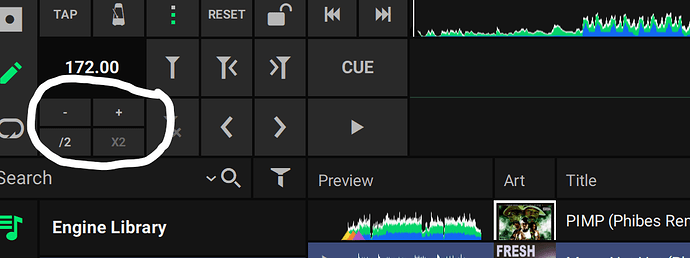I don’t know if it’s cause I slept poorly or I just don’t get it (or both!) but I’m having a hard time understanding how anchors work in Engine DJ. I have a track that sort of drifts like halfway through the song, but the first half the beat markers are aligned correctly (the tempo of the song doesn’t change which is odd this even happens). I assume anchors were a way to solve this but I can’t seem to figure it out. Correct me if I’m wrong, but I presumed that basically you’d drop an anchor at the first point you want to fix your beat grid, and then use the <> arrows to slide the grid: from the manual it seems to imply that anything before the anchor won’t be affected. But doing this slides the grid for the entire track so that must not be it.
So how do you properly use the anchor tool if you need to make 1 or 2 “reset” points in your track so that you can set the downbeat/beatgrid properly? If you could explain it like I’m 5 I’d appreciate it.
Also, does Engine DJ use any of the ID3 extra tags such as BPM? I looked at a few of my tracks and there’s some BPM tags in some, but not all. I notice they’re close to what Engine DJ says, but they’re whole numbers rather than the floating point I see in Engine DJ. I’ve done a full RE-analyze of my library, so maybe that caused it? Basically I’m wondering if by having some BPM tags in some of my files if that somehow is being read by Engine DJ and conflicting with it.
tl;dr - If I want to clean my tracks, should I nuke the BPM ID3 tag from them or does Engine DJ use whatever BPM is written to the database instead of the ID3 tag? And once again, if someone could explain anchors like I’m 5 I’d appreciate it. Thanks!
